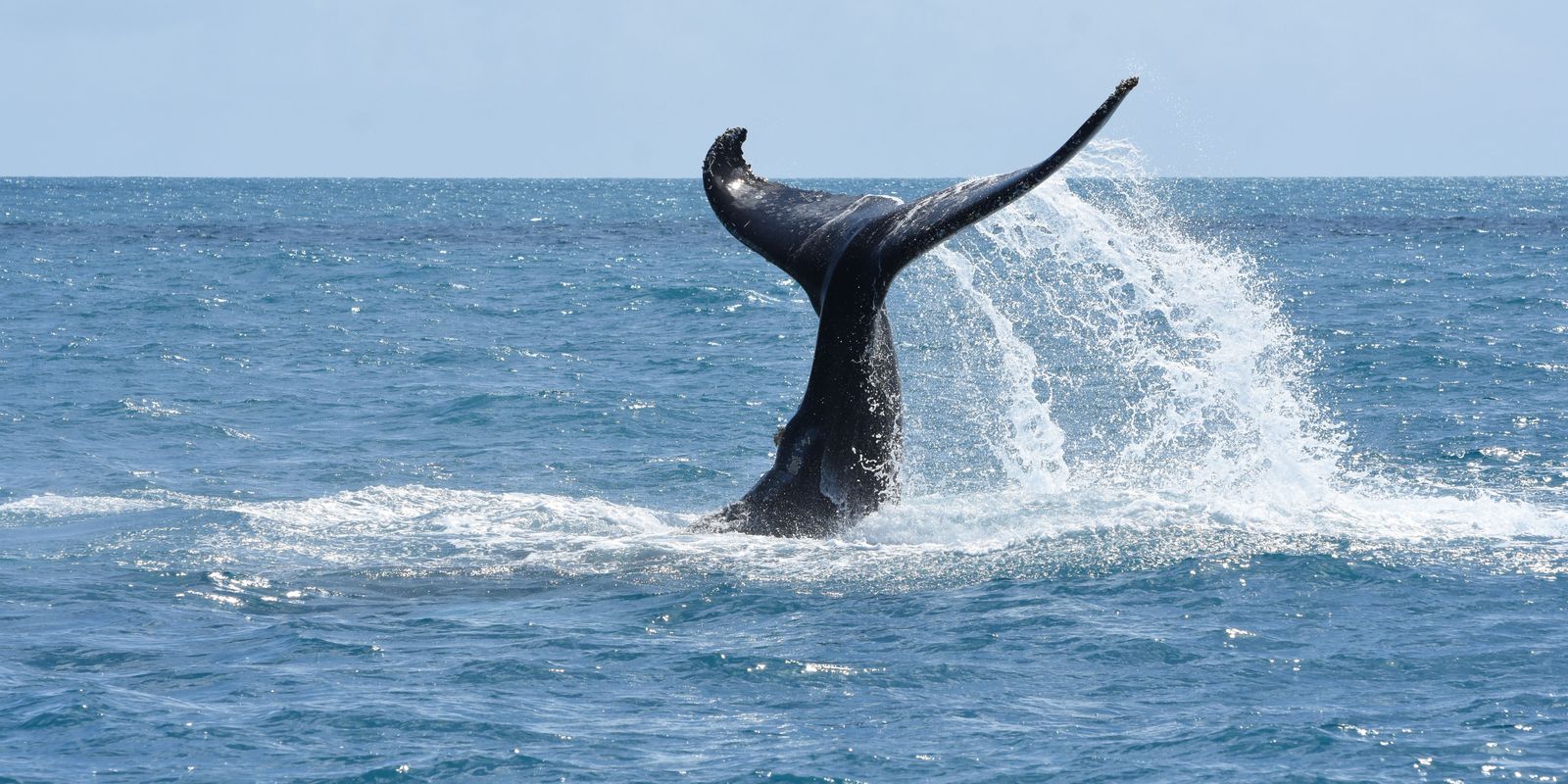The most recent aerial monitoring carried out by the Instituto Baleia Jubarte, which covered a distance of 6,200 kilometers between the border of Ceará and Rio Grande do Norte to the north coast of São Paulo, confirmed the recovery of the Brazilian population of these marine mammals, estimated at 25 thousand animals in the 2022 season. The number is comparable to the total existing 200 years ago, when the population was between 27 thousand and 30 thousand mammals of the species in Brazilian waters.
Carried out in August of this year in partnership with the company Socioambiental and with financial support from Veracel Celulose and Petrobras, the census confirmed that the Brazilian population of the species is close to full recovery.
Carried out every three years, aerial monitoring aims to estimate the population of humpback whales that visit the country’s coast. Monitoring has been carried out using special aircraft suitable for watching whales since 2003, when the partnership began and 3,660 humpbacks were registered. The survey carried out this year was carried out from the coast to the open sea, in waters with a depth of 500 meters.
The result is cause for great celebration, says biologist Enrico Marcovaldi, one of the founders of the Humpback Whale Project. “After decades of acting in the protection of whales, seeing this population almost completely recovered gives great joy and a feeling of mission almost accomplished. Almost, because we always have to act to prevent whales from being threatened again by the impacts of human activities.”
Nursery
The humpbacks stay from June to November in the country, especially in the region of Abrolhos, south of Bahia, which is an important nursery for the species on the Brazilian coast. According to biologist Márcia Engel, coordinator of aerial monitoring, this was the longest-term study ever carried out with a population of whales in Brazil and made it possible to monitor, each year, not only the recovery of the number of animals of the species, but also the way how it was reoccupying our territorial waters.
“It was based on the results of this monitoring that the Ministry of the Environment, in 2014, removed the humpback whale from the National List of Fauna Species Threatened with Extinction”, highlighted the biologist.
According to the Instituto Baleia Jubarte, the monitoring of whales over the years was crucial for the adoption of measures that helped to preserve the species, especially during the reproduction period. Density mapping makes it possible to identify where whales are concentrated, which is important for locating the navigation route of cellulose barges in areas with the lowest presence of these mammals, reducing the risk of collision.
Humpback whales that are born in Brazilian waters spend the winter and spring in the country. In October, the animal that came just to mate and still has no cubs, as well as some males, already begins to migrate, aiming to reach the feeding area in Antarctica as soon as possible.
The animals that have babies on the Brazilian coast stay until November. It is time for the calf to develop the layer of fat to face the sub-Antarctic areas, where it will be able to feed, in addition to gaining more muscles to accompany the mother, informed Milton Marcondes, veterinarian and research coordinator at the Baleia Jubarte Institute.
Due to the many reefs and other more protected areas, such as the Abrolhos Archipelago, the south of Bahia and the north of Espírito Santo are the regions of the Brazilian coast most sought after by humpback whales to have their young, which are naturally more protected.
Humpback hunting was banned in 1966 in Brazil, but in different states it was still widely practiced. In 1986, an international moratorium banned commercial hunting for five years. Only in 1987, however, did the country pass a law banning the hunting of humpback whales nationwide.
















